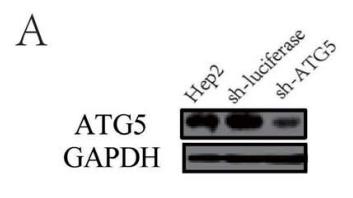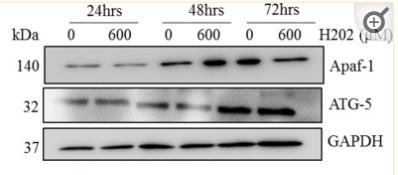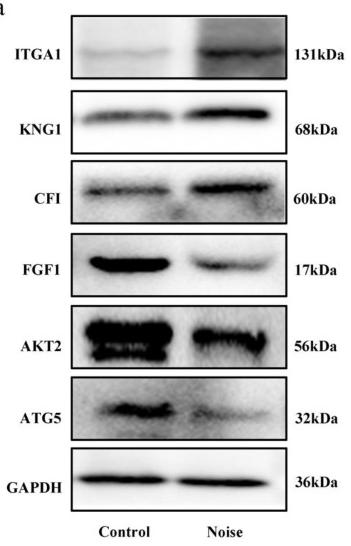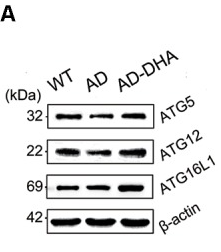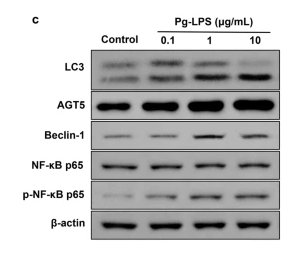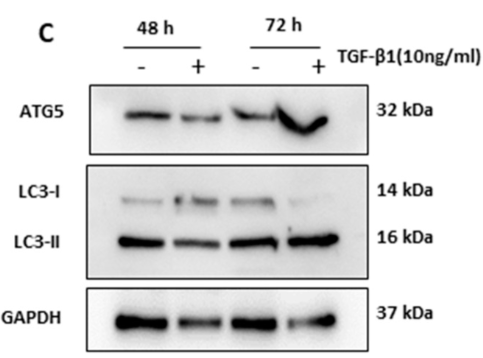ab16082 APG5L/ATG5 Antibody
品牌 |
|
|---|---|
产品货号 |
ab16082 |
来源种属 |
Rabbit |
抗体克隆 |
Polyclonal |
来源亚型 |
IgG |
实验方法 |
WB,IHC |
实验种属 |
Human,Mouse,Rat,Rabbit,Pig,Dog,Chicken,Bovine,Horse,Sheep |
偶联标记 |
Unconjugated |
目的蛋白 |
APG5L/ATG5 |
产品规格 |
50μl,100μl,200μl |
产品报价 |
¥1500/¥2750/¥3600 |
实验应用
Western blotting
Recommended dilution: 1:500-1:2000
Immunohistochemistry
Recommended dilution: 1:50-1:200最佳稀释倍数与浓度应由实验研究人员确认
产品说明
产品背景
Involved in autophagic vesicle formation. Conjugation with ATG12, through a ubiquitin-like conjugating system involving ATG7 as an E1-like activating enzyme and ATG10 as an E2-like conjugating enzyme, is essential for its function. The ATG12-ATG5 conjugate acts as an E3-like enzyme which is required for lipidation of ATG8 family proteins and their association to the vesicle membranes. Involved in mitochondrial quality control after oxidative damage, and in subsequent cellular longevity. Plays a critical role in multiple aspects of lymphocyte development and is essential for both B and T lymphocyte survival and proliferation. Required for optimal processing and presentation of antigens for MHC II. Involved in the maintenance of axon morphology and membrane structures, as well as in normal adipocyte differentiation. Promotes primary ciliogenesis through removal of OFD1 from centriolar satellites and degradation of IFT20 via the autophagic pathway.
May play an important role in the apoptotic process, possibly within the modified cytoskeleton. Its expression is a relatively late event in the apoptotic process, occurring downstream of caspase activity. Plays a crucial role in IFN-gamma-induced autophagic cell death by interacting with FADD.
(Microbial infection) May act as a proviral factor. In association with ATG12, negatively regulates the innate antiviral immune response by impairing the type I IFN production pathway upon vesicular stomatitis virus (VSV) infection. Required for the translation of incoming hepatitis C virus (HCV) RNA and, thereby, for initiation of HCV replication, but not required once infection is established.
Description
Rabbit polyclonal antibody to APG5L/ATG5
Applications
WB, IHC.
Immunogen
APG5L/ATG5 Antibody detects endogenous levels of total APG5L/ATG5.
Reactivity
Human, Mouse, Rat.
可预测:Pig(100%), Zebrafish(%), Bovine(%), Horse(%), Sheep(%), Rabbit(%), Dog(%), Chicken(%), Xenopus(%)
Molecular weight
35kD,56kD(complex); 32kD(Calculated).
Host species
Rabbit
Ig class
Immunogen-specific rabbit IgG
Purification
Antigen affinity purification
Full name
APG5L/ATG5
Synonyms
APG 5; APG 5L; APG5; APG5 autophagy 5 like; APG5 like; APG5-like; APG5L; Apoptosis specific protein; Apoptosis-specific protein; ASP; ATG 5; Atg5; ATG5 autophagy related 5 homolog; ATG5_HUMAN; Autophagy protein 5; Autophagy related 5; hAPG5; Homolog of S Cerevisiae autophagy 5; OTTHUMP00000040507;
Storage
Rabbit IgG in phosphate buffered saline , pH 7.4, 150mM NaCl, 0.02% sodium azide and 50% glycerol. Store at -20 °C. Stable for 12 months from date of receipt.
Swissprot
Q9H1Y0
产品图片
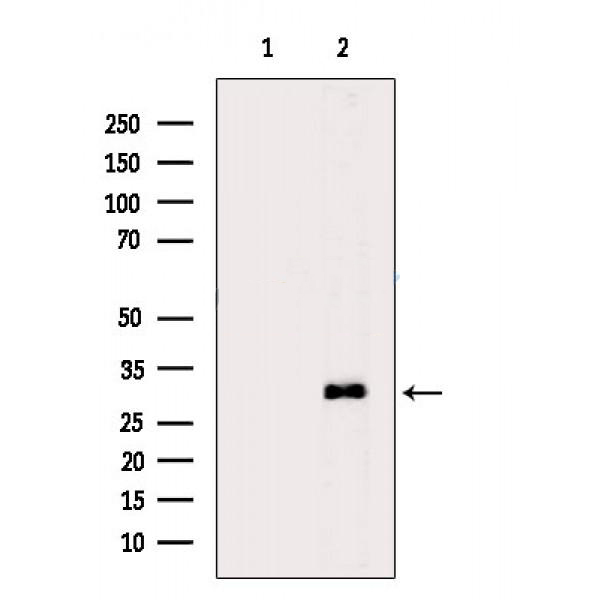
|
Western blot analysis of extracts from Rat muscle, using APG5L/ATG5 Antibody. The lane on the left was treated with blocking peptide. |
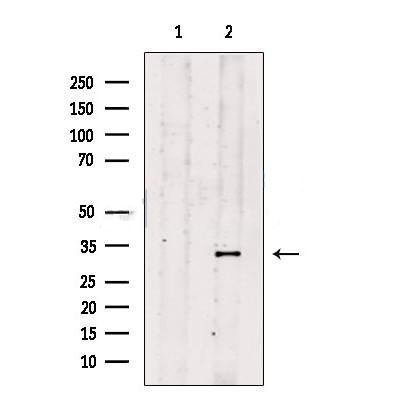
|
Western blot analysis of extracts from MCF7 cells, using ATG5 Antibody. The lane on the left was treated with blocking peptide. |

